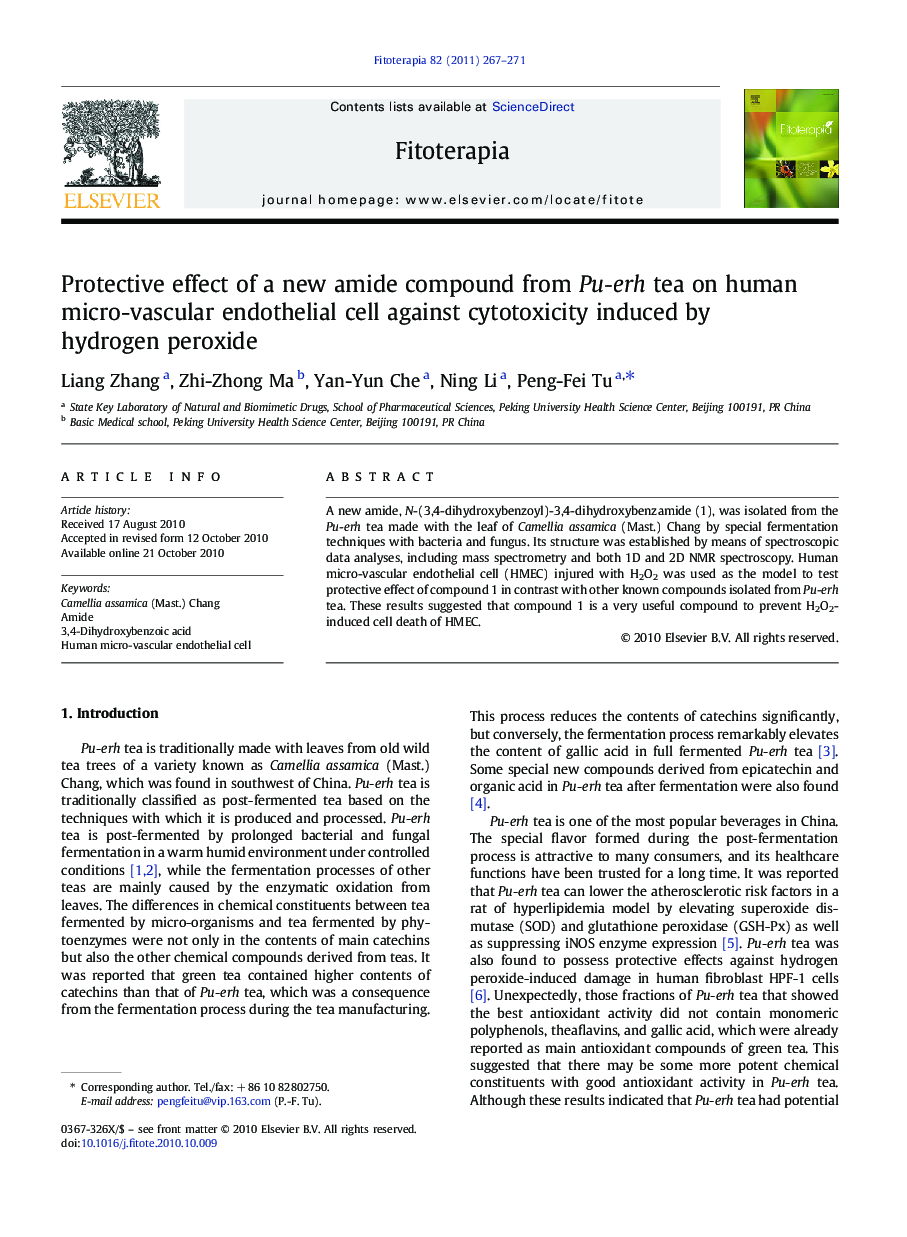| Article ID | Journal | Published Year | Pages | File Type |
|---|---|---|---|---|
| 2539303 | Fitoterapia | 2011 | 5 Pages |
Abstract
A new amide, N-(3,4-dihydroxybenzoyl)-3,4-dihydroxybenzamide (1), was isolated from the Pu-erh tea made with the leaf of Camellia assamica (Mast.) Chang by special fermentation techniques with bacteria and fungus. Its structure was established by means of spectroscopic data analyses, including mass spectrometry and both 1D and 2D NMR spectroscopy. Human micro-vascular endothelial cell (HMEC) injured with H2O2 was used as the model to test protective effect of compound 1 in contrast with other known compounds isolated from Pu-erh tea. These results suggested that compound 1 is a very useful compound to prevent H2O2-induced cell death of HMEC.
Graphical AbstractFigure optionsDownload full-size imageDownload as PowerPoint slide
Keywords
Related Topics
Health Sciences
Pharmacology, Toxicology and Pharmaceutical Science
Pharmacology
Authors
Liang Zhang, Zhi-Zhong Ma, Yan-Yun Che, Ning Li, Peng-Fei Tu,
